Top Raspberry Pi IoT Projects for Embedded Developers
Category: Embedded Systems
Discover the Best Raspberry Pi IoT Projects to Boost Your Embedded Skills
If you're a tech enthusiast or developer looking to dive into meaningful Raspberry Pi IoT projects, you've landed in the right place. Whether you’re proficient in Python, C/C++, or embedded systems and want to apply your skills to real-world connected devices, this comprehensive guide will streamline your journey. Many embedded developers struggle with picking the right IoT projects that are challenging, practical, and suitable for the Raspberry Pi ecosystem — often wasting time on fragmented sources. This post cuts through the noise by presenting a well-structured exploration of Raspberry Pi IoT projects that blend creativity, programming, and hardware integration. We cover projects ranging from smart home automation to environmental monitoring, each emphasizing embedded software development and efficient resource management. You’ll gain insights into both beginner-friendly and advanced projects to expand your portfolio and hone your skills in Python, C/C++, MQTT communication, and sensor integration. Structured for hobbyists and embedded programmers alike, this article offers a clear path to building robust IoT solutions using the Raspberry Pi platform. Reading on will equip you with ideas and best practices to accelerate your embedded IoT development efforts.
- Discover the Best Raspberry Pi IoT Projects to Boost Your Embedded Skills
- Understanding Raspberry Pi’s Role in IoT
- Essential Hardware Components for Raspberry Pi IoT Projects
- Programming Languages & Frameworks for Raspberry Pi IoT Development
- Beginner-Friendly Raspberry Pi IoT Projects to Kickstart Your Development Journey
- Advanced Raspberry Pi IoT Projects: Exploring Complex Ideas for Smart Automation and Security
- Connectivity and Communication Protocols in Raspberry Pi IoT Projects
- Data Management and Visualization for Raspberry Pi IoT Projects
- Embedded Systems Optimization for IoT: Best Practices for Low Power Consumption, Real-Time Processing, and Reliability
- Security Best Practices in Raspberry Pi IoT Deployments
- Expanding and Scaling Your Raspberry Pi IoT Solutions
Understanding Raspberry Pi’s Role in IoT
The Raspberry Pi has become a cornerstone for IoT developers due to its versatile hardware features and extensive software support. At its core, the Raspberry Pi’s General Purpose Input/Output (GPIO) pins provide direct access to hardware-level sensor and actuator interfacing. This capability allows embedded programmers to control everything from LED indicators to complex environmental sensors, making it ideal for real-time IoT applications.
Moreover, the Raspberry Pi supports multiple connectivity options essential for IoT systems, including built-in Wi-Fi and Bluetooth modules on models like the Raspberry Pi 3, 4, and Zero W. These features enable seamless wireless communication with cloud services, mobile apps, and other IoT devices, facilitating protocols such as MQTT, HTTP, and CoAP for efficient data transfer. Developers leveraging these connectivity options can deploy scalable IoT solutions that integrate smoothly within smart homes, industrial monitoring setups, or remote data logging networks.
When it comes to software, the Raspberry Pi’s flexibility shines through its support for various embedded operating systems tailored to IoT development. Popular choices include:
- Raspberry Pi OS (formerly Raspbian): A Debian-based OS with comprehensive Python and C/C++ support, perfect for beginners and advanced users alike.
- Ubuntu Core: A minimal, containerized OS suited for secure and robust IoT deployments.
- BalenaOS: Designed for containerized applications, facilitating easy deployment and update of IoT devices at scale.
- Windows 10 IoT Core: Enables developers familiar with Microsoft’s ecosystem to build universal apps for embedded uses.
By combining these hardware and software features, the Raspberry Pi stands out as a powerful, cost-effective platform for developing innovative IoT projects, offering unmatched flexibility and community support for embedded developers seeking to master connected device programming.
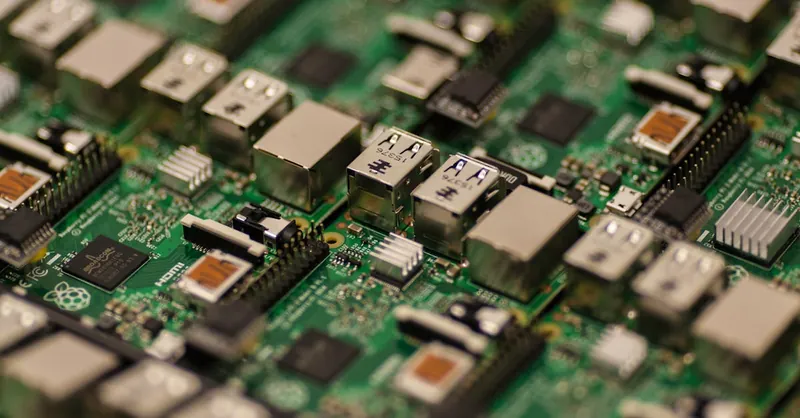
Image courtesy of Craig Dennis
Essential Hardware Components for Raspberry Pi IoT Projects
Building effective Raspberry Pi IoT projects hinges on selecting the right hardware components tailored to your use case. Whether you aim to monitor environmental data or control smart home devices, understanding the roles of sensors, actuators, communication modules, and power solutions is crucial for achieving reliable, scalable, and efficient IoT systems.
Sensors: The Eyes and Ears of Your IoT Device
Sensors are fundamental for collecting real-world data such as temperature, humidity, motion, or air quality. Common sensor types frequently integrated with Raspberry Pi include:
- Temperature and Humidity Sensors: DHT11, DHT22, and BME280 offer accurate environment monitoring.
- Motion Sensors: PIR sensors enable presence detection critical for security or automation projects.
- Gas and Air Quality Sensors: MQ series sensors detect smoke, CO, or other gases to enhance safety.
- Light Sensors: Photoresistors or TSL2561 sensors automate lighting based on ambient conditions.
Most sensors interface with Raspberry Pi via simple protocols like GPIO, I2C, or SPI, ensuring easy integration and real-time data acquisition using Python or C/C++ drivers.
Actuators: Bringing IoT to Life with Control
Actuators are hardware components that perform actions in response to sensor inputs or commands from your Raspberry Pi. Examples include:
- Relays and Solid State Relays (SSRs): Control high-voltage appliances safely.
- Motors and Servos: Enable physical movement for robotics or automation.
- LEDs and Buzzers: Provide immediate visual or audio feedback.
Efficient actuator control often requires careful handling of power and signal levels, sometimes necessitating additional driver boards or transistor circuits.
Communication Modules: Enabling IoT Connectivity Beyond Wi-Fi
While Raspberry Pi models include built-in Wi-Fi and Bluetooth, many IoT use cases demand long-range, low-power, or mesh network communication solutions. Popular communication modules complementing Raspberry Pi include:
- Zigbee Modules: Ideal for creating low-power, mesh-enabled smart home networks supporting numerous devices.
- LoRa (Long Range) Modules: Perfect for remote sensing projects requiring kilometers of range with minimal power usage.
- Bluetooth Low Energy (BLE) Modules: Useful for short-range device communication with minimal energy consumption.
- Cellular (3G/4G/5G) HATs: Provide IoT devices with internet access in areas lacking Wi-Fi infrastructure.
Selecting the right communication protocol depends on factors like data rate requirements, network topology, power constraints, and security considerations.
Power Considerations: Ensuring Reliable and Efficient IoT Operation
Power management is vital for Raspberry Pi IoT projects, especially those deployed remotely or running on batteries. Key aspects to consider include:
- Power Supply: Stable 5V power sources with sufficient current (usually 2.5A or more) prevent unexpected shutdowns.
- Battery Options: Lithium-ion/polymer batteries paired with power management ICs and UPS HATs enable portable, uninterrupted deployments.
- Energy Harvesting: Solar panels combined with charge controllers can extend runtime for outdoor applications.
- Power Optimization: Employing low-power modes, peripheral management, and efficient coding reduces overall energy consumption.
Integrating proper power solutions enhances the robustness and autonomy of Raspberry Pi-based IoT systems, ensuring continuous operation in diverse environments.
By carefully integrating these essential hardware components—sensors for data acquisition, actuators for physical interaction, communication modules for connectivity, and smart power solutions—you can develop powerful, scalable, and efficient Raspberry Pi IoT projects that bring embedded programming skills to life.
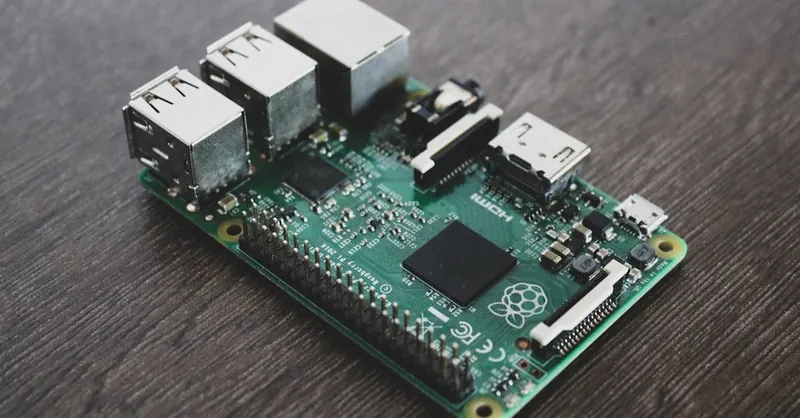
Image courtesy of Alessandro Oliverio
Programming Languages & Frameworks for Raspberry Pi IoT Development
Choosing the right programming languages and IoT frameworks is crucial for building efficient, scalable, and maintainable Raspberry Pi IoT projects. Given the Raspberry Pi’s broad software support, embedded developers can leverage multiple languages—primarily Python and C/C++—each offering unique strengths according to project requirements.
Python: The IoT Development Workhorse
Python is the most popular language for Raspberry Pi IoT projects due to its simplicity, extensive library ecosystem, and strong community support. Ideal for rapid prototyping and sensor integration, Python offers:
- Built-in libraries and modules such as RPi.GPIO, gpiozero, and Adafruit CircuitPython for seamless hardware interfacing.
- Support for popular IoT protocols like MQTT (via
paho-mqtt), HTTP, and CoAP, enabling easy cloud connectivity. - Compatibility with IoT frameworks such as Node-RED, which can be orchestrated with Python scripts for data processing and device control.
- Rich data handling and visualization capabilities, facilitating sensor data analysis and dashboard creation.
Python’s interpreted nature slightly trades off raw performance but excels in flexibility, making it perfect for proof-of-concept projects, smart home automation, and environment monitoring.
C/C++: Performance and Control for Embedded IoT
For applications demanding low-latency, high efficiency, or real-time control, C and C++ are preferred. These languages allow:
- Direct manipulation of hardware registers and fine-grained control over CPU and memory resources.
- Integration with real-time operating systems (RTOS) or bare-metal programming for latency-sensitive IoT solutions.
- Development of lightweight MQTT clients and other protocol stacks with minimal overhead.
- Use in performance-critical components such as sensor data acquisition loops, actuator control algorithms, and communication interfaces.
Though development time may be longer compared to Python, the performance gains and greater control of embedded resources make C/C++ indispensable for industrial IoT or robotics projects on the Raspberry Pi.
IoT Frameworks: Simplifying Connectivity and Automation
Beyond languages, leveraging IoT frameworks can greatly accelerate development and improve system reliability. Noteworthy frameworks compatible with Raspberry Pi include:
-
MQTT (Message Queuing Telemetry Transport): A lightweight publish-subscribe messaging protocol designed for constrained devices and unreliable networks. MQTT brokers like Mosquitto run efficiently on the Pi, enabling scalable communication among sensors, actuators, and cloud platforms.
-
Node-RED: A visual flow-based programming environment ideal for wiring together IoT devices, APIs, and online services. Node-RED supports numerous pre-built nodes for MQTT, HTTP, databases, and hardware interfaces, streamlining complex IoT workflows without extensive coding.
-
AWS IoT and Azure IoT SDKs: Cloud provider SDKs in Python and C++ allow seamless integration with major cloud platforms offering device management, analytics, and secure communication, making them suitable for enterprise-grade IoT solutions.
-
Home Assistant: An open-source home automation platform written in Python, it integrates easily with Raspberry Pi and supports a wide range of smart devices, perfect for DIY smart home projects combining sensors, actuators, and automation rules.
Selecting the appropriate programming language in conjunction with a robust IoT framework depends on factors such as project complexity, performance needs, ease of development, and scalability requirements. By mastering Python and C/C++ along with MQTT, Node-RED, or cloud SDKs, embedded developers can unlock the full potential of the Raspberry Pi for innovative IoT applications.

Image courtesy of Christina Morillo
Beginner-Friendly Raspberry Pi IoT Projects to Kickstart Your Development Journey
If you’re just starting out with Raspberry Pi IoT development, diving into simple but effective projects is the best way to build confidence and sharpen your embedded programming skills. Beginner-friendly projects typically involve straightforward hardware setups and clear software workflows, focusing on practical applications such as temperature monitoring, motion detection, and remote LED control. These projects not only introduce you to essential concepts like sensor data acquisition, GPIO interfacing, and basic networking, but also lay the groundwork for more advanced IoT implementations.
1. Temperature and Humidity Monitoring with DHT22 Sensor
A classic entry-level project involves connecting a DHT22 temperature and humidity sensor to the Raspberry Pi’s GPIO pins. Using Python libraries such as Adafruit_DHT, you can write a script to:
- Read real-time environmental data.
- Log the data locally or send it to a cloud service via MQTT for remote monitoring.
- Visualize temperature and humidity changes on a simple web dashboard.
This project familiarizes you with sensor communication, data handling, and basic IoT concepts like wireless data transmission and cloud integration.
2. PIR Motion Detection for Home Security
Using a Passive Infrared (PIR) sensor, you can create a motion detector that triggers actions when movement is detected. This project teaches:
- GPIO event detection and interrupt handling in Python or C/C++.
- Integration with actuators such as LEDs, buzzers, or even camera modules to capture images on motion events.
- Implementation of alert systems via email or push notifications using MQTT or HTTP APIs.
This practical example combines hardware interfacing with real-time event-driven programming, essential for responsive IoT designs.
3. Remote LED Control via MQTT Messaging
Controlling LEDs remotely is an excellent way to understand wireless communication in IoT. By setting up an MQTT broker like Mosquitto on the Raspberry Pi or another server, you can:
- Publish and subscribe to LED control commands using Python scripts.
- Toggle LEDs connected to GPIO pins remotely using client applications on smartphones or other devices.
- Explore secure communication methods and message serialization formats like JSON.
This project solidifies your grasp of MQTT protocol, networked device control, and asynchronous programming — core skills for scalable IoT networks.
By tackling these beginner-friendly Raspberry Pi IoT projects, you embed foundational knowledge of sensor interfacing, actuator control, and network communication, all programmed using Python or C/C++. These hands-on experiences prepare you to confidently advance toward complex projects involving multi-sensor systems, real-time analytics, and cloud-based automation.

Image courtesy of Jakub Zerdzicki
Advanced Raspberry Pi IoT Projects: Exploring Complex Ideas for Smart Automation and Security
As you progress beyond beginner projects, tackling advanced Raspberry Pi IoT projects unlocks a realm of possibilities that blend sophisticated hardware integration, real-time data analytics, and enhanced security measures. These projects typically involve multiple sensors and actuators, cloud connectivity, and robust software architectures—perfect for embedded developers seeking to master scalable, secure, and intelligent IoT systems.
Building a Smart Home Hub with Multi-Protocol Integration
A popular advanced project is creating a custom smart home hub that consolidates various IoT devices under one centralized platform. This involves:
- Integrating sensors for temperature, humidity, motion, and light to monitor home environment and occupancy.
- Controlling actuators such as smart lights, thermostats, and security cameras through GPIO, Zigbee, or Z-Wave modules connected to the Raspberry Pi.
- Implementing MQTT brokers and Node-RED flows to enable seamless communication between devices and user interfaces.
- Creating a secure web or mobile dashboard for real-time monitoring, automation rules, and remote control.
- Using Python or C++ microservices to handle device management, edge processing, and data synchronization with cloud services like AWS IoT or Azure IoT Hub.
Developing such a smart home hub refines your skills in multi-protocol communication, device orchestration, and real-time embedded programming, while emphasizing modular and maintainable system design.
Environmental Sensors Combined with Data Analytics and Visualization
Another complex project involves designing a distributed environmental sensing network capable of collecting, analyzing, and visualizing data for informed decision-making. Key aspects include:
- Deploying arrays of sensors—such as BME280 for air quality, soil moisture sensors for agriculture, and light sensors for energy optimization—networked via Wi-Fi, LoRa, or Zigbee.
- Using the Raspberry Pi as an edge gateway to aggregate sensor data and perform local preprocessing with Python libraries like Pandas and NumPy.
- Integrating time-series databases such as InfluxDB and visualization tools like Grafana to provide intuitive dashboards and trend analysis.
- Implementing alerting mechanisms triggered by anomaly detection or threshold breaches, enhancing proactive system responses.
This project hones your ability to architect data-driven IoT systems, blending embedded data acquisition with cloud computing and analytics frameworks—cornerstones for smart cities, agriculture tech, and environmental monitoring solutions.
Implementing IoT Security Best Practices on Raspberry Pi
Security is paramount in advanced IoT scenarios, and Raspberry Pi projects require meticulous attention to protect devices and networks from vulnerabilities. Best practices for IoT security implementations include:
- Secure Boot and Firmware Verification: Ensuring that the Raspberry Pi boots only trusted software images to prevent unauthorized code execution.
- Encrypted Communication: Using TLS/SSL for MQTT, HTTP, or CoAP protocols to safeguard data in transit between devices and cloud platforms.
- Authentication and Authorization: Deploying certificate-based device identity, OAuth tokens, or secure key management to control access.
- Regular Firmware Updates: Automating secure over-the-air (OTA) updates with rollback capabilities to patch vulnerabilities without downtime.
- Firewall and Network Segmentation: Configuring network policies on the Raspberry Pi to isolate critical components and mitigate attack surfaces.
- Intrusion Detection: Implementing lightweight monitoring agents that trigger alerts on suspicious activity or configuration changes.
Mastering these security techniques not only strengthens your projects’ resilience but also prepares you to design enterprise-grade IoT deployments compliant with industry standards.
By engaging with these advanced Raspberry Pi IoT projects, you elevate your embedded programming prowess, learn to manage complex system interactions, and contribute to building intelligent, secure, and data-centric IoT ecosystems.
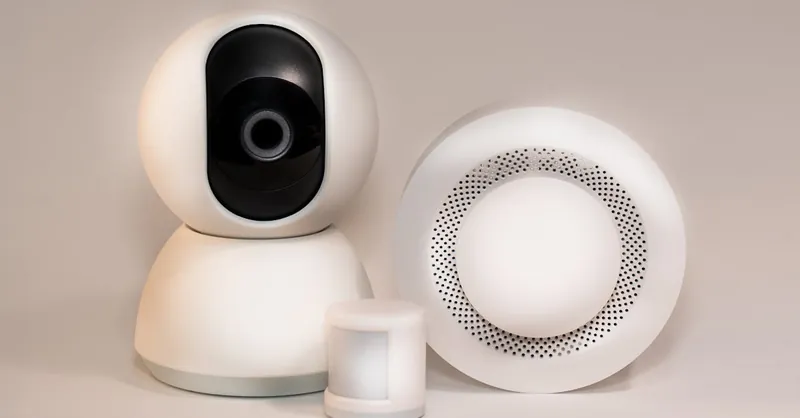
Image courtesy of Jakub Zerdzicki
Connectivity and Communication Protocols in Raspberry Pi IoT Projects
Effective connectivity and communication protocols form the backbone of successful Raspberry Pi IoT projects, enabling seamless device-to-cloud and device-to-device interactions. Understanding key protocols like MQTT, HTTP REST APIs, and others is crucial for embedded developers aiming to build scalable, responsive, and secure IoT networks.
MQTT: Lightweight Messaging for Reliable IoT Communication
MQTT (Message Queuing Telemetry Transport) is a widely adopted, lightweight publish-subscribe messaging protocol designed specifically for IoT devices with constrained resources and unreliable network conditions. Its efficiency and minimal bandwidth usage make it ideal for Raspberry Pi projects involving numerous sensors and actuators that require frequent data updates or command transmissions.
Key features of MQTT include:
- Decoupled Communication: Devices (clients) publish or subscribe to MQTT topics via a central broker (e.g., Mosquitto), enabling flexible and scalable data exchange.
- Quality of Service (QoS) Levels: Guarantees delivery with configurable reliability, helpful for critical IoT applications.
- Retained Messages and Last Will: Ensure devices can receive the latest state or detect offline nodes.
- Low Power Consumption: Suitable for battery-operated Raspberry Pi IoT setups.
Using MQTT in your Raspberry Pi projects simplifies real-time telemetry, remote control, and event-driven automation while maintaining low latency and robust network resilience.
HTTP REST APIs: Versatile and Ubiquitous Communication
Most cloud platforms, web services, and IoT dashboards support HTTP REST APIs, making this protocol essential for integration and interoperability. REST (Representational State Transfer) uses standard HTTP methods (GET, POST, PUT, DELETE) to enable stateless, scalable communication between Raspberry Pi devices and cloud servers or web clients.
Advantages of HTTP REST APIs in Raspberry Pi IoT projects include:
- Ease of Implementation: Python libraries like
requestsor C++ HTTP clients facilitate rapid development. - Wide Compatibility: Supported by virtually every cloud IoT platform, including AWS IoT, Azure IoT Hub, and Google Cloud IoT.
- Human and Machine Readable: JSON or XML payloads ease parsing and debugging.
- Flexibility: Suitable for data logging, configuration updates, firmware management, and user interaction.
While REST APIs typically involve higher overhead compared to MQTT and may not be ideal for real-time critical messaging, they excel in scenarios requiring detailed query-response exchanges and integration with web-based applications.
Other Essential Protocols and Standards
Apart from MQTT and HTTP REST, several other protocols enhance Raspberry Pi IoT communication, depending on project demands:
- CoAP (Constrained Application Protocol): A UDP-based protocol optimized for constrained devices and low-power networks, offering efficient resource discovery and asynchronous messaging.
- WebSockets: Enable full-duplex communication channels over a single TCP connection, useful for real-time web dashboards and interactive control.
- DDS (Data Distribution Service): Provides real-time, scalable, and high-performance data exchange for complex IoT systems, particularly in industrial automation.
- Zigbee and Z-Wave: Wireless mesh network protocols that coordinate device-to-device communication for home automation modules connected to the Raspberry Pi.
- Bluetooth Low Energy (BLE): Suitable for short-range, low-power device interactions such as wearable sensors or proximity-based triggers.
Selecting the right communication protocol hinges on factors like network topology, data throughput, latency requirements, power efficiency, and security needs.
By mastering these protocols—primarily MQTT for lightweight pub-sub messaging and HTTP REST APIs for broad cloud integration—you can architect robust IoT solutions that leverage the Raspberry Pi’s connectivity capabilities to their fullest potential. This understanding empowers embedded developers to build scalable, responsive, and interoperable IoT ecosystems tailored for diverse applications and environments.
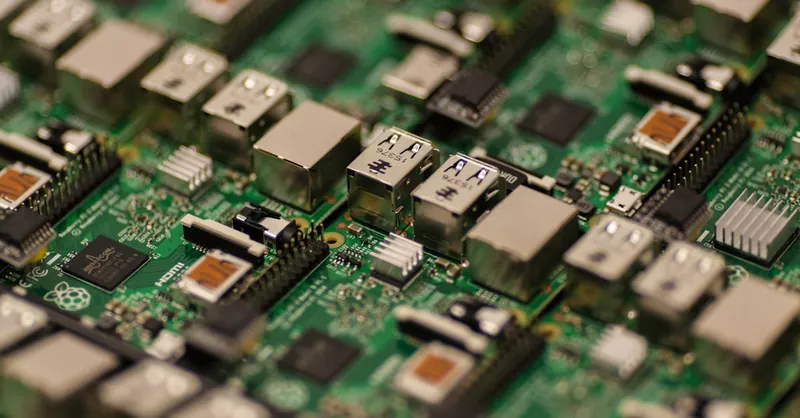
Image courtesy of Craig Dennis
Data Management and Visualization for Raspberry Pi IoT Projects
Efficient data management and intuitive visualization are critical components of successful Raspberry Pi IoT projects, enabling you to transform raw sensor data into actionable insights. Whether you store data locally on the Raspberry Pi or push it to cloud platforms, organizing and presenting information through dynamic dashboards greatly enhances your IoT system’s usability and monitoring capabilities.
Techniques for Storing IoT Data Locally and in the Cloud
- Local Storage Options:
- Use lightweight databases like SQLite or time-series databases such as InfluxDB directly on the Raspberry Pi to store sensor data efficiently.
- Employ filesystem-based logging with structured formats like CSV or JSON for simple data persistence.
-
Implement buffering and data caching strategies to handle intermittent connectivity, ensuring no data loss during transmission delays.
-
Cloud Storage and Integration:
- Leverage cloud platforms like AWS IoT, Azure IoT Hub, or Google Cloud IoT Core that provide secure, scalable data ingestion pipelines.
- Utilize MQTT brokers or HTTP REST APIs to forward sensor data from the Raspberry Pi to cloud databases or data lakes.
- Apply edge computing principles by preprocessing data locally using Python libraries (e.g., Pandas, NumPy) before uploading, optimizing bandwidth and reducing cloud costs.
Visualizing IoT Data with Dashboards: Grafana and ThingsBoard
Visual dashboards convert complex IoT data streams into intuitive charts and alerts, essential for real-time monitoring and historical analysis.
- Grafana: A powerful open-source visualization tool that integrates natively with many time-series databases, including InfluxDB and Prometheus. When combined with the Raspberry Pi:
- Set up InfluxDB as a data source to aggregate sensor metrics.
- Create customizable panels visualizing temperature trends, humidity levels, or device status.
-
Configure alerting rules to notify users directly on threshold breaches or anomalies.
-
ThingsBoard: An end-to-end IoT platform offering device management, data collection, and dashboard creation with minimal coding.
- Connect your Raspberry Pi as a device client using MQTT or HTTP to send telemetry data.
- Utilize ThingsBoard’s widget library to build interactive dashboards featuring gauges, maps, and graphs.
- Benefit from built-in rule engines for real-time processing and automated actions based on sensor inputs.
By combining robust data storage solutions and dynamic visualization platforms, you empower your Raspberry Pi IoT projects with effective data management pipelines. This approach not only enhances the interpretability of sensor data but also enables proactive decision-making through automated alerts and insightful analytics, making your embedded IoT system smarter and more responsive.

Image courtesy of Lukas
Embedded Systems Optimization for IoT: Best Practices for Low Power Consumption, Real-Time Processing, and Reliability
Optimizing embedded Raspberry Pi IoT devices is essential to maximize their efficiency, responsiveness, and longevity, especially when deployed in real-world scenarios where resources are constrained. To build robust IoT systems, embedded developers must address three critical aspects: low power consumption, real-time processing, and system reliability—each influencing device performance and user experience.
Low Power Consumption Strategies for Raspberry Pi IoT Devices
Power efficiency is paramount in IoT deployments, particularly for battery-powered or remote Raspberry Pi systems. Best practices to reduce energy usage include:
-
Utilize Power-Saving Modes: Although the Raspberry Pi lacks deep sleep modes typical of microcontrollers, you can minimize power by disabling unused peripherals (e.g., HDMI, onboard LEDs, Wi-Fi/Bluetooth modules when not needed) via software commands or device tree overlays.
-
Optimize CPU Frequency Scaling: Employ dynamic frequency scaling (DVFS) to adjust CPU speeds based on workload, reducing unnecessary power draw during idle periods.
-
Efficient Peripheral Management: Power down or disconnect external sensors and actuators when inactive, using GPIO control or hardware switches, to prevent needless current consumption.
-
Code-Level Optimization: Write optimized firmware in C/C++ or Python to reduce CPU usage and keep busy loops minimal. Implement event-driven programming and interrupt-based sensor readings to avoid polling overhead.
-
Adopt Energy-Efficient Communication Protocols: Select low-power wireless options (e.g., LoRa, BLE) over power-hungry Wi-Fi where feasible, and minimize data transmission frequency by aggregating and compressing sensor data locally before sending.
Real-Time Processing Considerations for Responsive IoT Applications
For IoT projects requiring timely responses—such as industrial automation, security alarms, or robotics—ensuring deterministic real-time performance on Raspberry Pi is vital. Key recommendations include:
-
Use Real-Time Operating Systems (RTOS) or PREEMPT-RT Patches: While the standard Raspberry Pi OS is not real-time, applying PREEMPT-RT patches or deploying lightweight RTOS alternatives (e.g., FreeRTOS on Raspberry Pi Pico co-processors) can deliver predictable task scheduling and low latency.
-
Prioritize Critical Tasks: Leverage Linux real-time scheduling policies (
SCHED_FIFO,SCHED_RR) to assign high priority to essential sensor reading and actuator control threads. -
Minimize Interrupt Latency: Carefully configure interrupt handlers and avoid blocking calls or long processing within interrupts to maintain responsiveness.
-
Offload Heavy Computation: Delegate non-critical processing to background threads or external servers to keep the embedded device focused on immediate real-time tasks.
Enhancing Reliability in Embedded Raspberry Pi IoT Deployments
Reliability is crucial for any embedded IoT system, ensuring stable long-term operation without failures or data loss. Best practices to increase reliability include:
-
Robust Power Supply Design: Use quality power sources with voltage regulation, surge protection, and battery backup (UPS HATs) to prevent brownouts and unexpected resets.
-
Watchdog Timers and Health Monitoring: Configure hardware or software watchdogs to automatically reboot the Raspberry Pi upon system hangs or crashes, and implement health-check scripts that monitor critical services.
-
File System Integrity: Utilize read-only filesystems or overlayFS setups to avoid corruption caused by power interruptions, which is common in embedded Linux environments.
-
Secure and Reliable Software Updates: Design over-the-air (OTA) firmware update mechanisms with fail-safe rollback capabilities to ensure devices remain secure without risking bricking.
-
Error Handling and Logging: Incorporate comprehensive error detection, exception handling, and persistent logging to diagnose issues promptly and maintain operational transparency.
Implementing these embedded systems optimization best practices empowers Raspberry Pi developers to create energy-efficient, responsive, and trustworthy IoT devices tailored for diverse applications—from smart agriculture to industrial monitoring—while leveraging the power and flexibility of the Raspberry Pi platform.
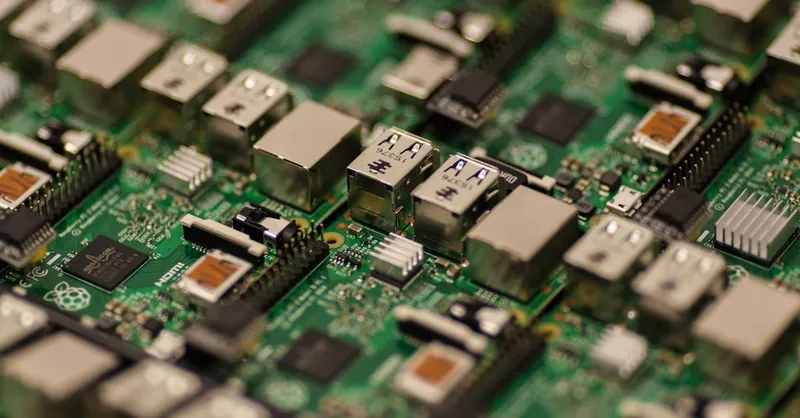
Image courtesy of Craig Dennis
Security Best Practices in Raspberry Pi IoT Deployments
Securing your Raspberry Pi IoT projects is a critical step to protect sensitive data, maintain device integrity, and ensure the reliability of your embedded system. With the increasing exposure of IoT devices to the internet and diverse networks, following security best practices around authentication, data encryption, and network configuration is essential to mitigate risks such as unauthorized access, data breaches, and device hijacking.
Authentication: Ensuring Trusted Device Access
Implementing strong authentication mechanisms prevents unauthorized users or malicious entities from controlling or extracting data from your Raspberry Pi IoT devices. Recommended approaches include:
- Use SSH Key-Based Authentication: Disable password login on your Raspberry Pi and configure SSH with cryptographic key pairs, which are far more secure than password-only access.
- Implement Mutual TLS Authentication: For MQTT or HTTP communication, mutual TLS verifies both server and client identities using certificates, strengthening trust in device-to-cloud or device-to-device connections.
- Deploy OAuth or Token-Based Access Controls: When interfacing with cloud services or APIs, utilize tokens with limited scopes and expiration to control access dynamically.
- Leverage Hardware Security Modules (HSMs): Where feasible, integrate secure elements or TPM (Trusted Platform Module) devices to store cryptographic keys securely on your Raspberry Pi.
Data Encryption: Protecting Information in Transit and at Rest
Encrypting data safeguards it against interception and tampering, critical for IoT systems that handle personal, industrial, or sensitive information. Key recommendations include:
- Encrypt Network Traffic Using TLS/SSL: Whether using MQTT, HTTPS, or CoAP, always enable encryption to shield data from eavesdropping or man-in-the-middle attacks.
- Secure Local Storage: Use filesystem encryption or encrypted containers to protect stored sensor data, logs, or credentials on the Raspberry Pi’s SD card.
- Encrypt Sensitive Configuration Files: Ensure secrets such as API keys, passwords, and certificates are encrypted or managed securely via environment variables or secret management tools.
Safe Network Configuration: Minimizing Exposure and Attack Surface
Proper network setup hardens your Raspberry Pi IoT deployment against external threats by reducing unnecessary exposure and controlling traffic flows:
- Isolate IoT Devices on Separate VLANs or Subnets: Segregate your Raspberry Pi IoT systems from sensitive internal networks to limit lateral movement if a device is compromised.
- Configure Firewalls and Access Control Lists (ACLs): Use
iptablesorufwon Raspberry Pi to restrict inbound and outbound connections to only trusted IP addresses and necessary ports. - Disable Unused Services and Ports: Minimize attack vectors by turning off non-essential network services and closing open ports.
- Enable Intrusion Detection and Prevention Systems: Deploy lightweight monitoring tools such as Fail2Ban, Snort, or custom scripts to detect and block suspicious activities.
- Regularly Update Software and Firmware: Maintain up-to-date operating systems, drivers, and application libraries to patch known vulnerabilities swiftly.
By rigorously applying these security best practices—robust authentication, comprehensive data encryption, and fortified network configurations—developers can significantly enhance the defense of Raspberry Pi IoT deployments. Prioritizing security not only protects your hardware and data but also builds trust with end-users and paves the way for scalable, enterprise-grade embedded IoT systems.

Image courtesy of Miguel Á. Padriñán
Expanding and Scaling Your Raspberry Pi IoT Solutions
As your Raspberry Pi IoT projects evolve from single-node setups to complex systems, understanding how to expand and scale your IoT infrastructure is essential for maintaining reliability, performance, and manageability. Advanced scaling involves designing multi-node networks, integrating cloud connectivity, and orchestrating communication between multiple microcontrollers or external services to create cohesive, distributed IoT ecosystems.
Building Multi-Node Networks for Distributed IoT Applications
To extend the reach and functionality of your IoT projects, consider deploying multiple Raspberry Pi nodes or integrating other microcontrollers (like Arduino, ESP32). A multi-node network architecture enables:
- Distributed Sensing and Actuation: Each node can serve a specific role—collecting sensor data or driving actuators locally—reducing latency and improving fault tolerance.
- Mesh or Star Topologies: Employ communication protocols such as MQTT, Zigbee mesh networks, or LoRa WAN to interconnect nodes, allowing scalable device additions without bogging down the network.
- Edge Processing: Nodes perform preliminary data filtering or aggregation, minimizing cloud bandwidth usage and latency.
- Load Balancing and Redundancy: Distribute workloads and create failover mechanisms to increase system robustness.
Implementing multi-node architectures requires thoughtful addressing schemes, synchronization, and secure communication channels, ensuring that all devices interoperate efficiently within the larger network.
Leveraging Cloud Connectivity for Scalable IoT Management
Cloud platforms play a pivotal role in scaling Raspberry Pi IoT deployments by offering on-demand infrastructure for data storage, device management, analytics, and automation. Key considerations for cloud integration include:
- Choosing the Right Cloud Service: Popular options include AWS IoT, Azure IoT Hub, and Google Cloud IoT Core, each supporting seamless device provisioning, secure communication, and scalable data ingestion.
- Using MQTT and REST APIs: Utilize these protocols with secure TLS connections to transmit telemetry and receive commands from the cloud.
- Implementing Device Shadowing and Twin Models: Synchronize device states between the cloud and edge devices to enable remote monitoring and offline operation.
- Automating Workflows: Use cloud-side rule engines and serverless functions (e.g., AWS Lambda or Azure Functions) to trigger actions based on sensor data or schedules, facilitating smart automation at scale.
- Centralized Firmware and Configuration Management: Employ cloud-based OTA update services to efficiently roll out software patches or configuration changes across your Raspberry Pi fleet.
Cloud connectivity not only simplifies device orchestration but also enhances scalability by abstracting infrastructure management and offering real-time insights across distributed IoT deployments.
Integrating with Other Microcontrollers and Third-Party Services
Expanding your Raspberry Pi IoT ecosystem often involves integrating heterogeneous hardware and cloud services to leverage their specialized capabilities:
- Microcontroller Coordination: Use Raspberry Pi as a gateway managing data exchange and control signals to/from microcontrollers like Arduino or ESP32 over serial, I2C, SPI, or wireless links (BLE, Wi-Fi). This hybrid model balances heavy computation and connectivity handled by the Pi with real-time sensing/control by microcontrollers.
- Third-Party API Integration: Connect your IoT system to external services such as weather data providers, SMS gateways, or home automation platforms via RESTful APIs, enriching your project’s functionality and user interactivity.
- Event-Driven Architectures: Employ middleware (like Node-RED) to orchestrate workflows that combine multiple data sources and actuation commands across devices and cloud services without complex coding.
- Security Across Integrations: Maintain end-to-end encryption and authenticate all devices and services to prevent vulnerabilities introduced by third-party components.
By designing your Raspberry Pi IoT projects with scalability, modularity, and interoperability in mind, you create flexible solutions that can grow organically and integrate seamlessly with diverse hardware and cloud ecosystems, unlocking higher levels of automation, analytics, and system intelligence.
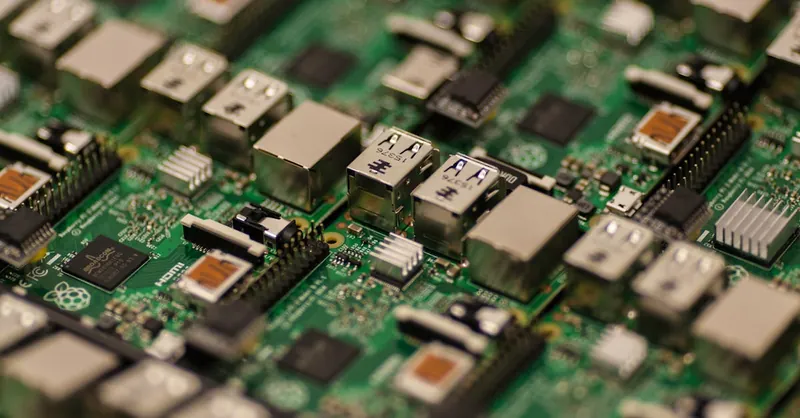
Image courtesy of Craig Dennis
